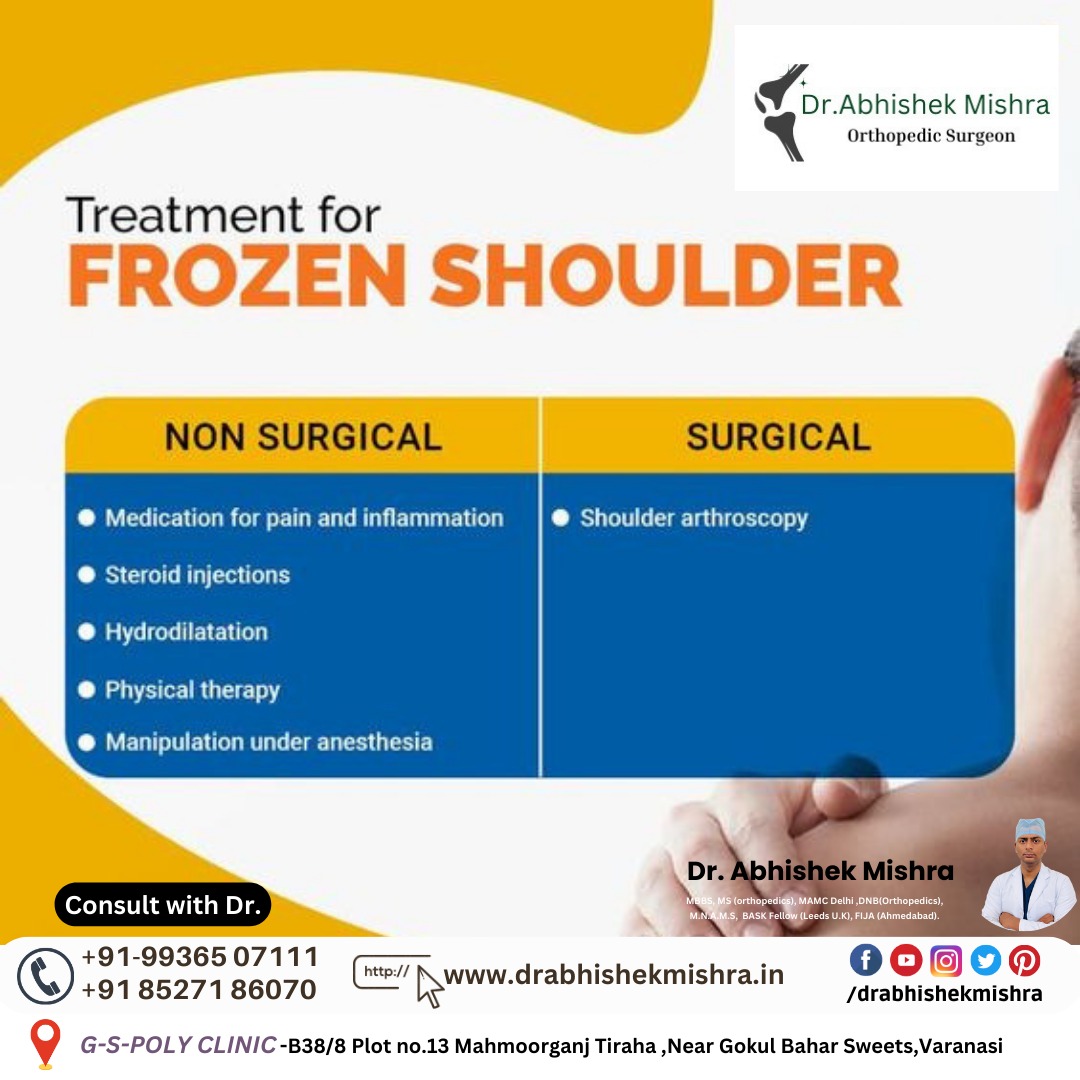If you’re looking for treatment for frozen shoulder (also known as adhesive capsulitis), it’s important to note that the approach to treatment may vary based on the severity of the condition and individual factors. Always consult with a healthcare professional for personalized advice. Here are some general strategies that may be part of the treatment plan for frozen shoulder:
- Pain Relief:
- Over-the-counter pain relievers, such as ibuprofen or acetaminophen, may be recommended to manage pain and inflammation.
- Topical pain relievers or ice packs can also be used to alleviate pain.
- Physical Therapy:
- Physical therapy is a key component of treatment for frozen shoulder. Range of motion exercises and stretching can help improve flexibility and reduce stiffness.
- Your physical therapist may guide you through specific exercises to target the shoulder joint and surrounding muscles.
- Heat Therapy:
- Applying heat to the shoulder before stretching exercises can help relax the muscles and improve flexibility.
- Joint Distension:
- In some cases, your doctor may use a procedure called joint distension. This involves injecting sterile water into the joint capsule to stretch it.
- Joint Manipulation Under Anesthesia (MUA):
- This is a procedure where the patient is put under anesthesia, and the doctor manipulates the arm to break up the adhesions in the shoulder joint.
- Corticosteroid Injections:
- Injections of corticosteroids into the shoulder joint may help reduce inflammation and provide relief from pain.
- Home Exercises:
- Your healthcare provider or physical therapist may prescribe specific exercises for you to do at home to complement the in-office sessions.
- Activity Modification:
- It may be necessary to temporarily modify activities that worsen the symptoms or put strain on the shoulder.
- Patient Education:
- Understanding the condition and knowing how to manage symptoms is crucial. Your healthcare provider may provide information on self-care strategies and preventive measures.


No responses yet